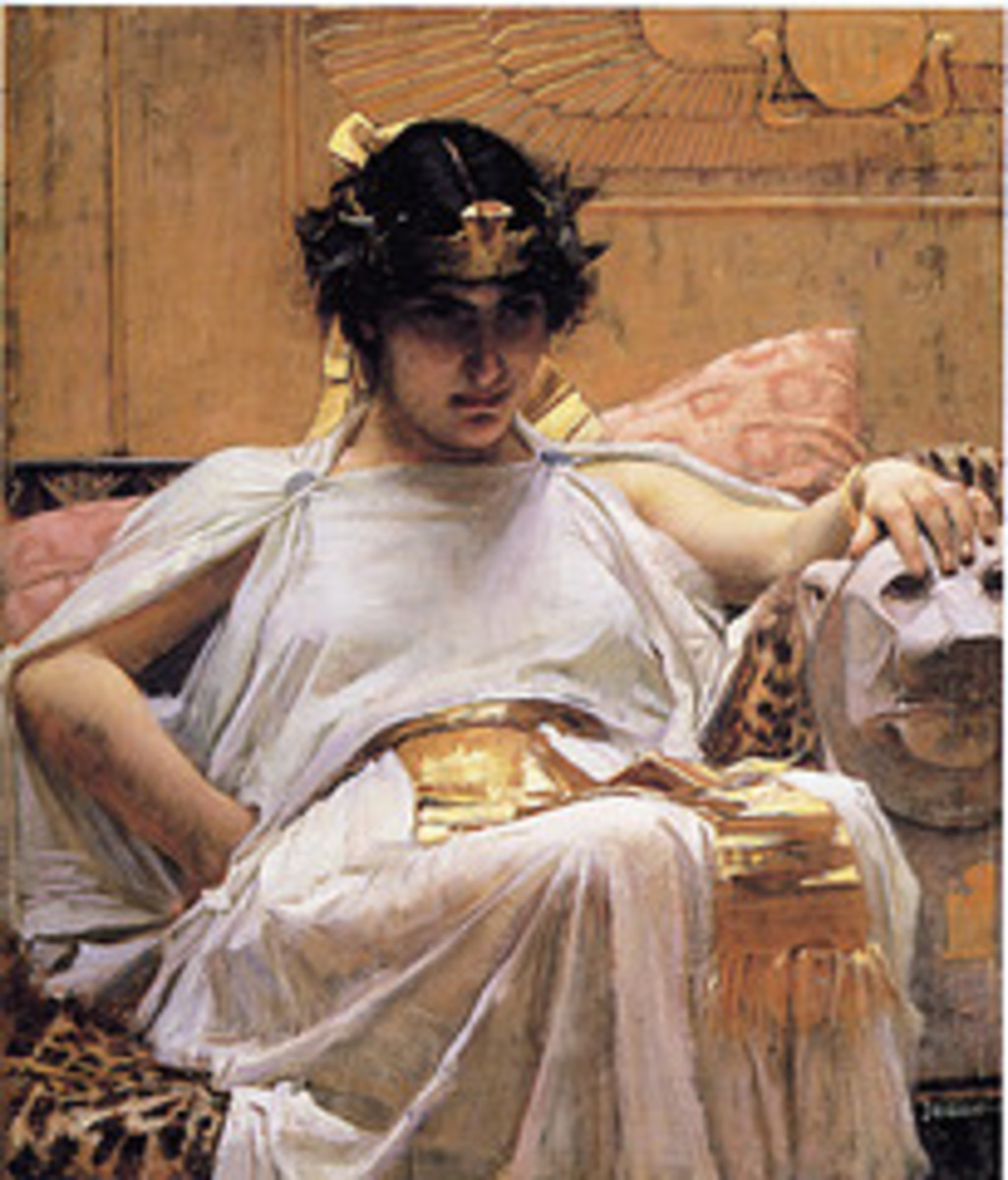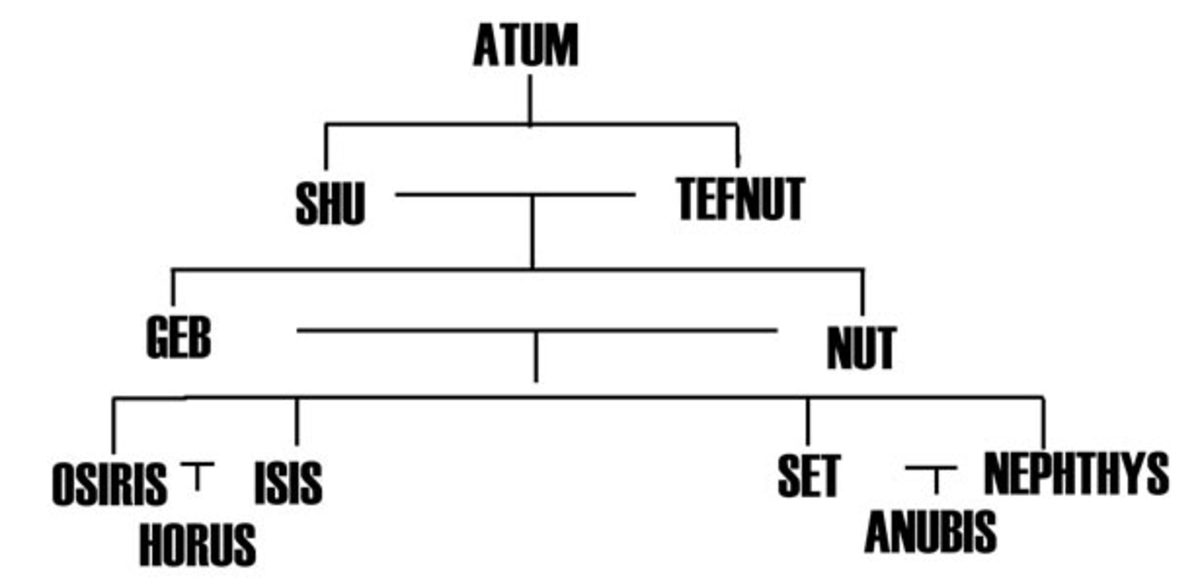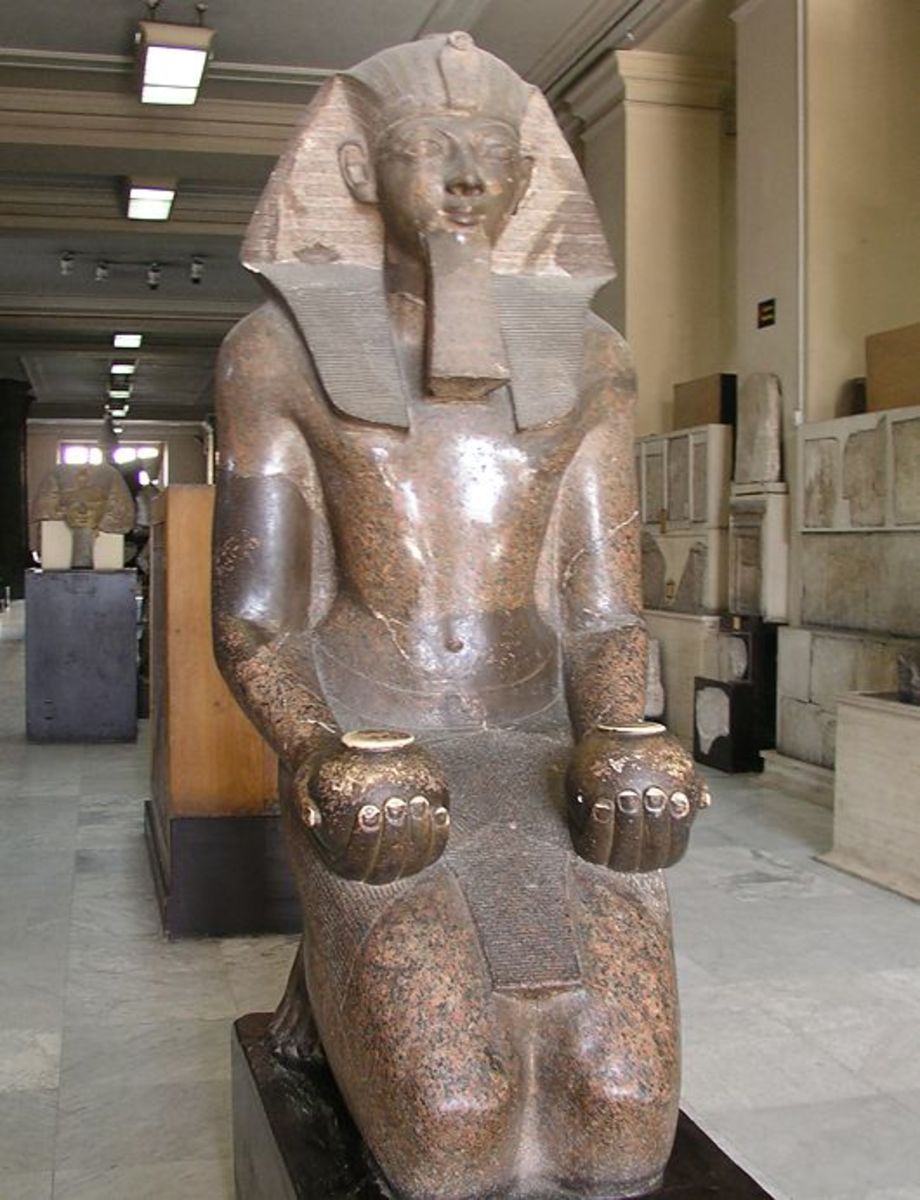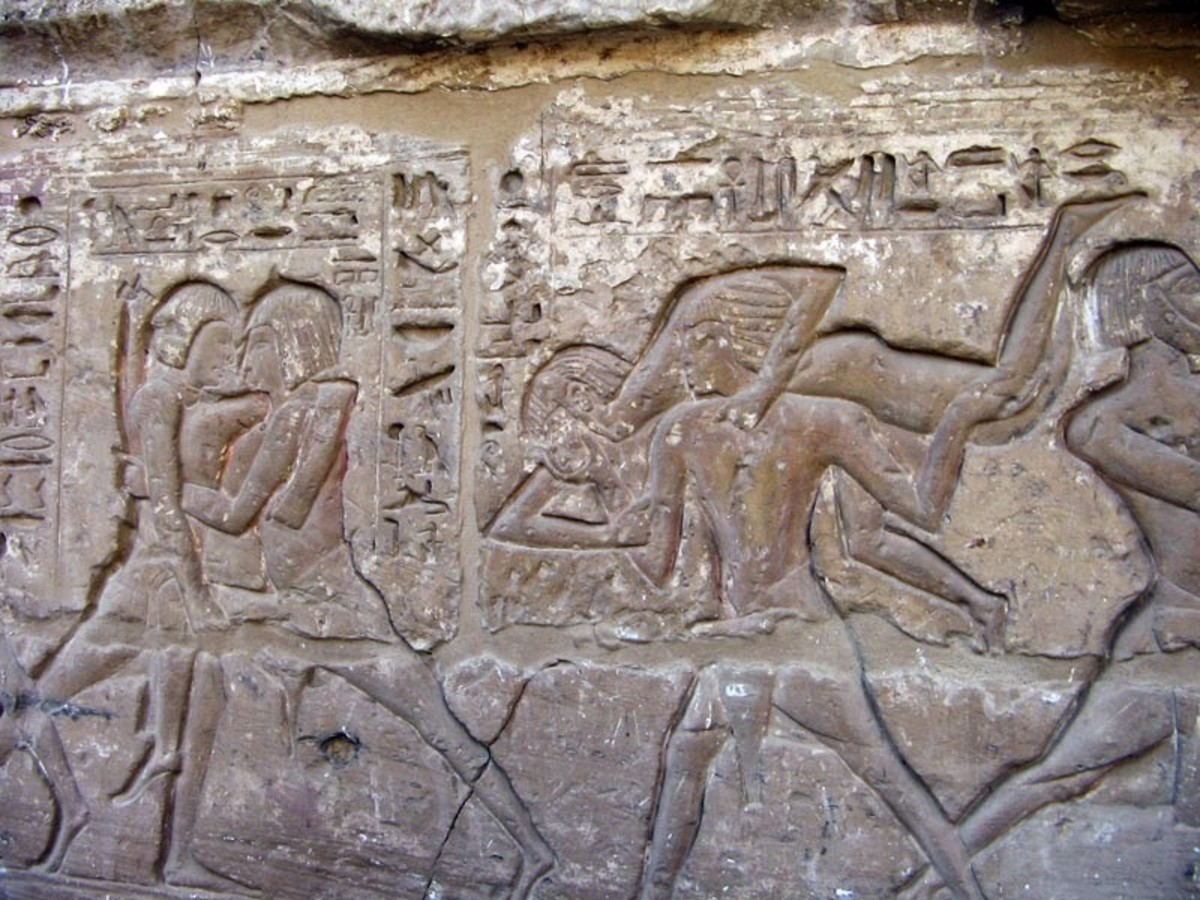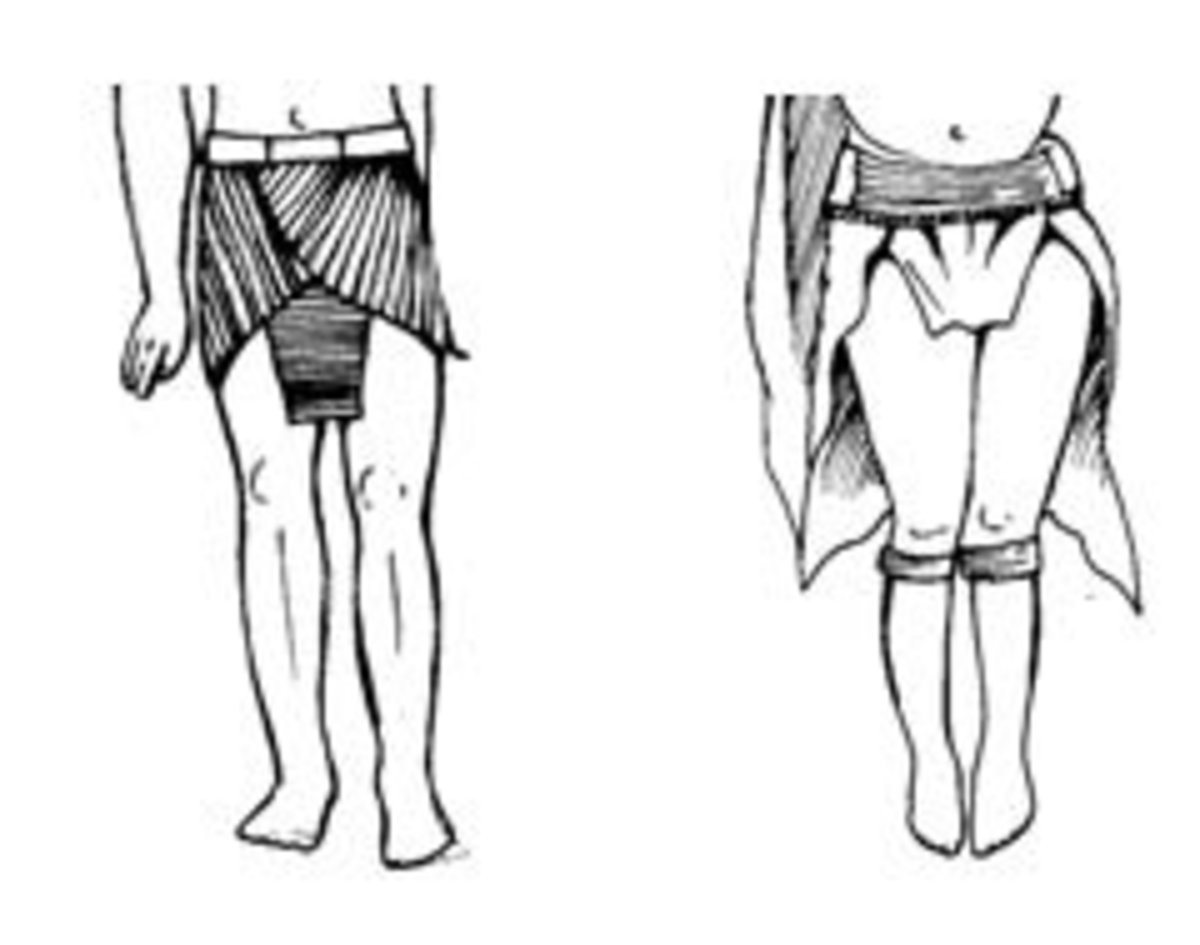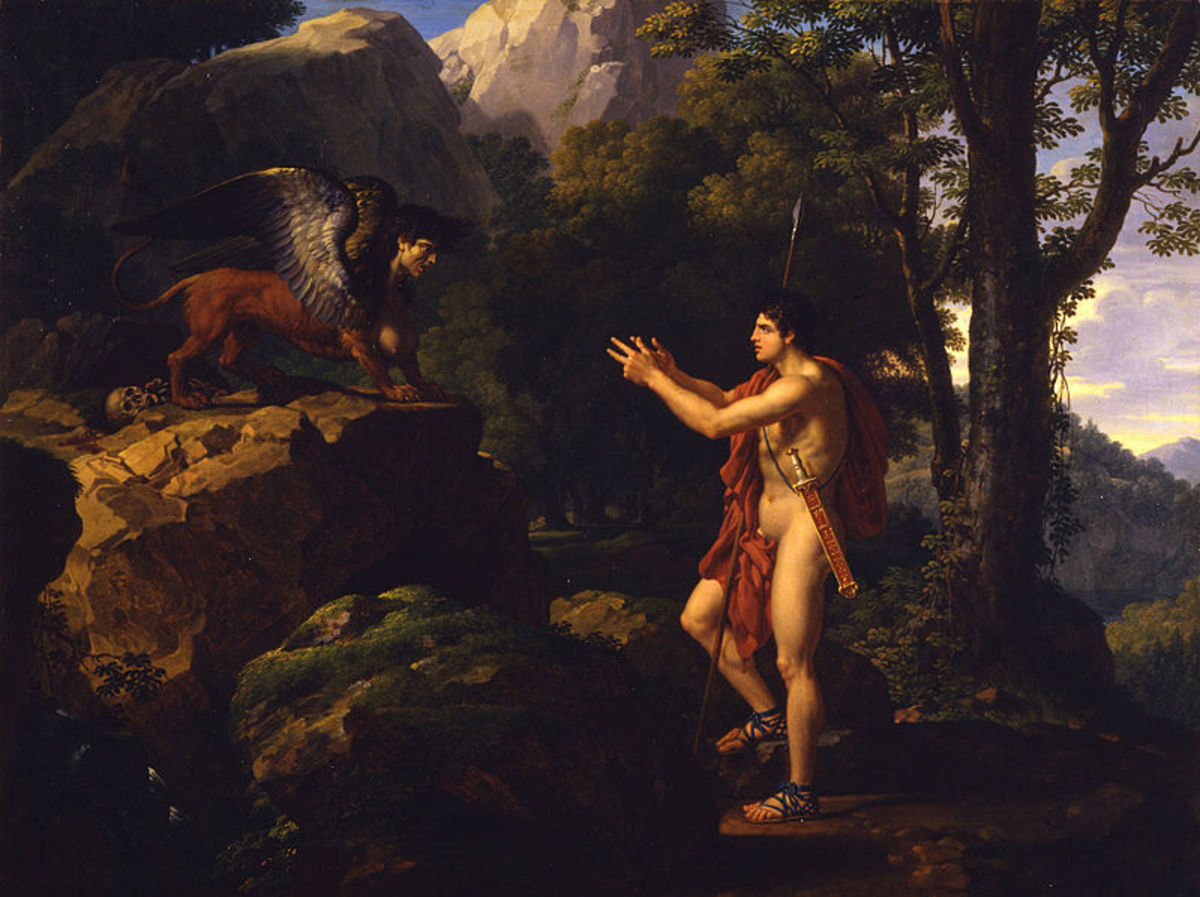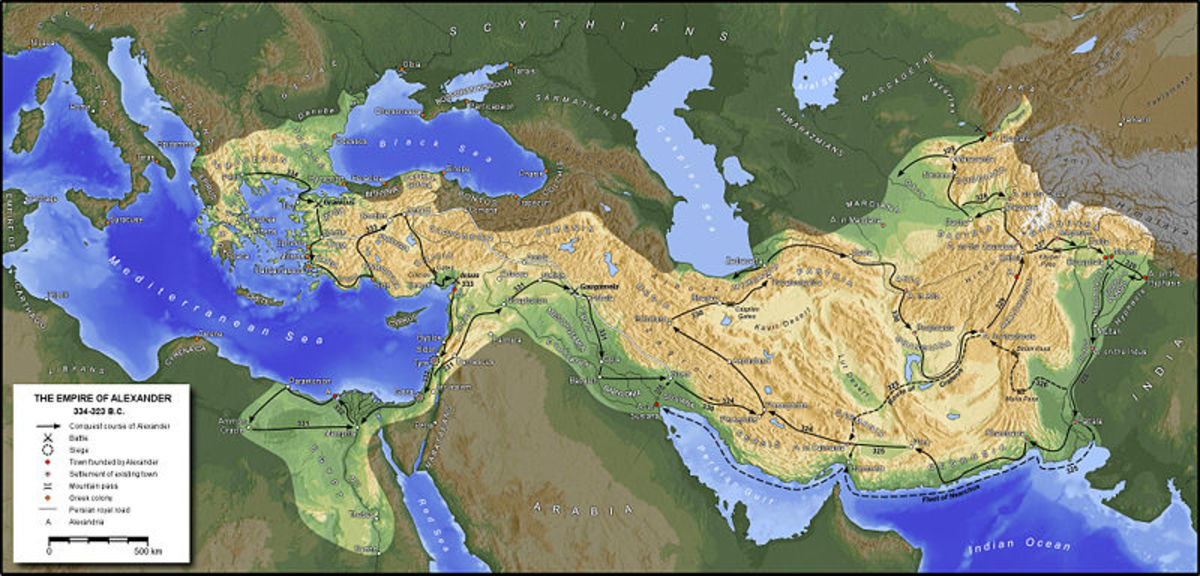Ancient Egyptian History: Creation Mythology
Cosmologies
To understand the various aspects of Ancient Egyptian history a basic knowledge of her creation myths or cosmologies is necessary. These myths play a prominent role, not just in her religious life, but in her politics, economics, language, and everyday operations. Each myth begins with the idea that the known universe is created from a liquid state usually described as chaos. There are four basic Ancient Egyptian creation myths or cosmologies which were designed to create unity between various nomes, or areas, and merge them into the larger political masses of Upper Egypt (south), and Lower Egypt (north), by syncretising many local city gods or deities together into a national whole.
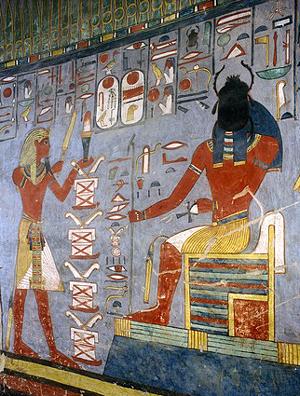
Heliopolitan Myth
The earliest myth, originating in Heliopolis, now a suburb of Cairo, provides inspiration throughout history for many Egyptian theologians. The Heliopolitan myth begins with ‘Nun’, an uncontrolled liquid also known as chaos, who cradles the seeds of life. Nun remains even after creation, but is held back at the periphery of the organised universe where it could still invade if balance was disturbed. It accommodates stillborn babies, souls not properly prepared through funerary rites, and anything not categorised within the known universe. The sun rises from the watery chaos and appears on a mound of pure sand taking the appearance of the ‘benben’ stone which represents the sun’s rays petrified. This god who creates himself is Ra Atum. Ra represents the physical sun, and Atum embodies the perfect being. Ra Atum spits out his seed and creates Shu the god of dryness or air, and Tefnut the goddess of humidity. Shu and Tefnut’s union produces Nut the sky goddess and Geb the earth god – a man and a woman. Nut and Geb have four children named Isis, Osiris, Seth and Nephthys. These four generations are the divine ennead. While Seth and Nephthys can have no children, Isis and Osiris are considered the prototype for the Ancient Egyptian royal family. Murder and mayhem ensue as Seth kills Osiris and seizes the throne, but Isis, aided by her sister Nephthys, gathers together the dismembered body of Osiris. Anubis, the jackal god born of an illegitimate union between Osiris and Nephthys, embalms Osiris. Soon, Isis gives birth to Osiris` son Horus. She hides her son from Seth in the Delta marshes with the help of the goddess Hathor. Eventually, once Horus has grown, he gains the throne back as his inheritance, and his father Osiris rules the kingdom of the dead.
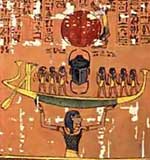
Hermopolitan Myth
The second creation myth competed with the Heliopolitan system and originated in the capital of the fifteenth nome of Upper Egypt called Hermopolis which was approximately 300 kilometres south of Cairo. Instead of the sun being created before the gods as in the Heliopolitan myth, the sun is created after the gods. The stories begin in the same way with an uncreated liquid chaos where four pairs of frogs and serpents combine to produce and egg. Again a mound of earth emerges from the waters, signifying the ground reappearing after inundation of the Nile, and upon this they place the egg. The couples involved in this creation are male / female single elements. Nun and Nunet represent the primordial ocean, Heh and Hehet are the ‘water that seeks its way’, Keku and Keket embody darkness, and finally Amun is the hidden god and Amaunet is his consort. Known as the Ogdoad, or group of eight, the myth can be dated to the Fifth Dynasty where the word hmnw or “Eight-town” originated.
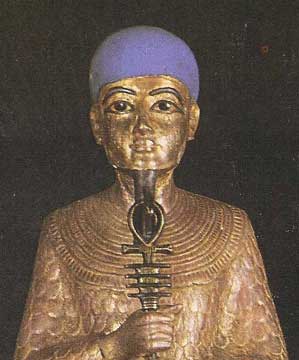
- BBC - History: Egyptians
Around 5000 years ago the ancient Egyptians established an extraordinary and enduring civilisation. Enter their world. - The Ancient Egypt Site
- Ancient Egypt - Menu page
British Museum Site
Memphite and Theban
The third myth, the Memphite Theology is one of the more sophisticated myths and combines the Heliopolitan and Hermopolitan systems, yet leans heavily on the Heliopolitan by relying on the Osiris myth. The Memphite tradition centres on making Ptah, the local god of Memphis (about 25 kilometres southwest of Heliopolis), into a demiurge role and at one point was thought to date to the Fifth Dynasty, but more recent analyses of pertinent texts dates it to the Nineteenth Dynasty during Ramses II. Ptah is the patron god of craftsmen, much the same as Hephaestus of Greek mythology. In the myth Ptah has the idea of creation within him which includes gods, mankind, earth and concepts such as justice and balance. He speaks it all into existence. This method of creation hearkens to a Christian Judeo tradition where God ‘commanded’ the various aspects of creation into being in Genesis chapter one. James P. Allen observes the Memphite system “place[s] Egyptian thought squarely in the line and at the beginning of the great traditions of Western philosophy” (173).
In the Theban mythology, the Hermopolitan system of the Ogdoad is modified. Amun, of the fourth couple, is thought to be separate from the created world and that his true nature is hidden from all. All aspects of creation are simply parts of Amun, and thus Amun would become the head of the Egyptian pantheon.
The Ancient Egyptians’ mythology helped them to define, explain, and relate to their world. From these basic myths would come many more gods and goddesses which were much more than just ‘controllers’ of natural phenomena in the minds of the Egyptians. They believed the deities were in fact the elements described. The wind did not just blow on them ; it was Shu brushing their cheek (Allen 43). One cannot help but wonder if the Egyptian religious consciousness was simply a reflection of the respect and reverence they held for their natural world. If so there is great healing, value and benefit for our own time in viewing the world through the eyes of an Ancient Egyptian.
Works Consulted
1) Allen, James P. Middle Egyptian: an Introduction to the Language and Culture of Hieroglyphs. Cambridge UK : Cambridge University Press, 2001.
2) Grimal, Nicolas. The History of Ancient Egypt. Malden USA: Blackwell Publishing, 2003.

